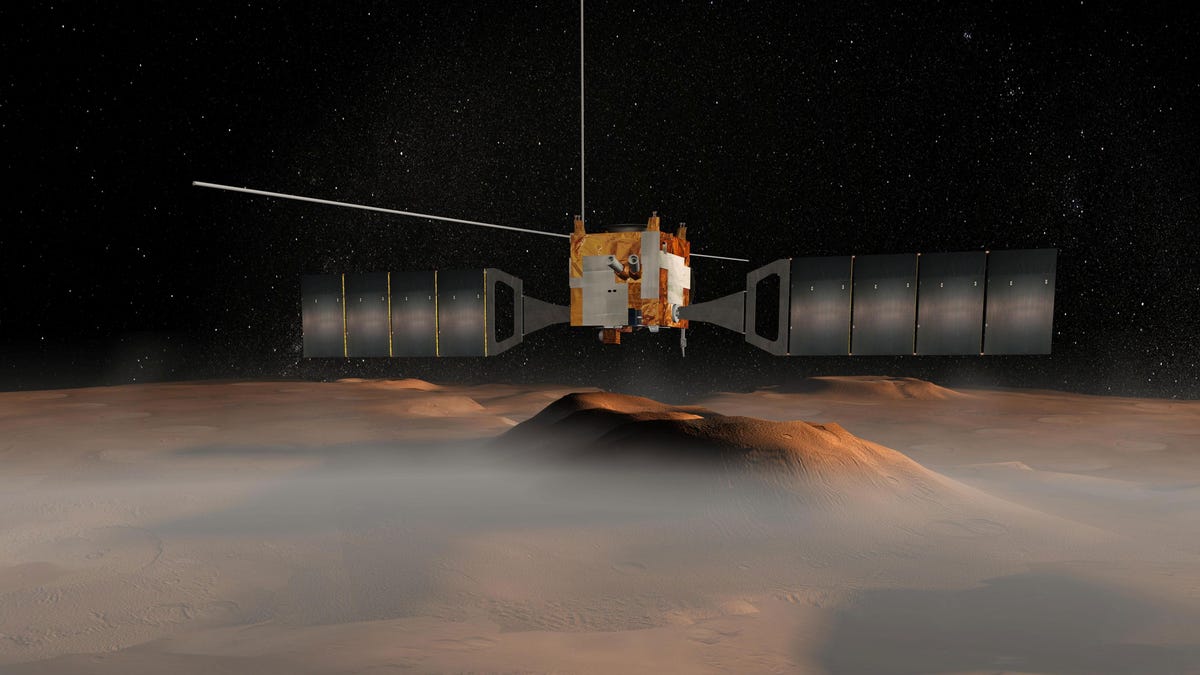NASA Scientists Find More Subsurface Lakes on Mars Leave a comment

Researchers peering at layered deposits on Mars’ south pole found what appear to be dozens of subsurface lakes, though many of them are in areas where water would be frozen.
The research team measured the volume of those deposits, which contain alternating layers of dust, water ice, and frozen carbon dioxide—dry ice. The layers contain the story of Mars’ climatological history; when the planet’s tilt was slightly different, wintry conditions formed the frozen layers that scientists now inspect using surface-piercing radar. (Like Earth, Mars has its own ice ages, the most recent of which it emerged from 400,000 years ago. Discover Magazine has a great explainer on how the planet’s tilt affects its seasons and climate.) The team’s results were published in the Geophysical Research Letters earlier this month, and they follow up on the 2018 finding of water ice beneath the planet’s south pole.
“We’re not certain whether these signals are liquid water or not, but they appear to be much more widespread than what the original paper found,” said Jeffrey Plaut, a research scientist at NASA’s Jet Propulsion Laboratory, in an agency statement. “Either liquid water is common beneath Mars’ south pole or these signals are indicative of something else.”

The radar, pointed at Mars from the MARSIS instrument aboard the European Space Agency’s Mars Express orbiter, bounces back differently depending on what material it hits, and water is a strong reflector of radar waves. The radar bouncing off the south pole came back bright, evidence that liquid water or water ice lies beneath. Water ice on Mars is old news at this point, but exactly how much if it exists there is unknown. In 2019, a massive amount of water ice was found under the North Pole, and previous radar signals hinted at a stretch of subsurface liquid water in a 6- to 12- mile swath of the planet’s south pole. But Plaut and his co-author, Aditya Khuller, found dozens of bright reflections across the pole across a much broader region than previously realized, some which indicated the detections were less than a mile below Mars’ surface. But those detected regions also lie in frigid areas of about -81° Fahrenheit (-63° Celsius), meaning the water would be frozen.
Citing a paper from 2019 that investigated how liquid water could occur at the pole, Khuller noted that “it would take double the estimated Martian geothermal heat flow to keep this water liquid. One possible way to get this amount of heat is through volcanism. However, we haven’t really seen any strong evidence for recent volcanism at the south pole, so it seems unlikely that volcanic activity would allow subsurface liquid water to be present throughout this region.”
Maybe we’ll have to set a rover or other probe down on the Martian south pole to better explore the geophysics of those frozen recesses of the planet. In 1999, NASA’s Mars Polar Lander and its two probes, collectively called Deep Space 2, went to Mars to do just this, but, sadly, the instruments were lost on arrival.
More: An Astounding Amount of Water Has Been Discovered Beneath the Martian North Pole

